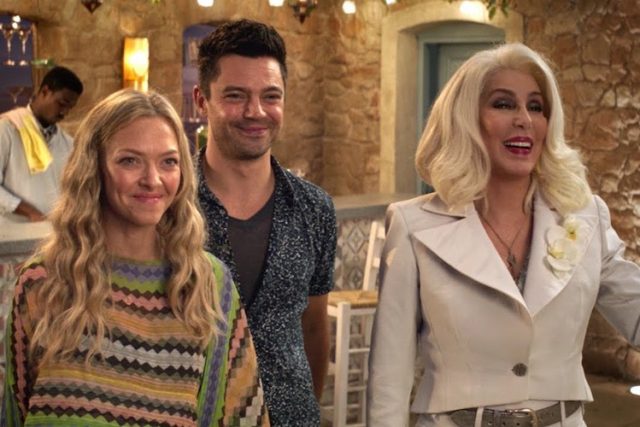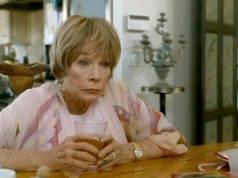
“Mamma Mia!” was a badly written headache based on a badly written live musical, adapted for the screen by the same people who had staged it on Broadway, who leaned on the show’s built-in fanbase like a crutch. (No reason to improve something that’s already popular, right?) The sequel, being based on nothing, has to try harder. As a result, it’s more humble and unassuming — pleasantly dumb in the manner of classic corny musicals, but not (unlike its predecessor) aggravatingly stupid. What a difference a good script makes!
The action in “Mamma Mia! Here We Go Again” picks up five years later. Free-spirited Donna (Meryl Streep) has died, and her daughter, Sophie (Amanda Seyfried), is about to reopen their quaint hotel on the tiny Greek island, working with suave hotel manager Señor Cienfuegos (a smoldering Andy Garcia). Sophie’s husband, Sky (Dominic Cooper), in New York on business, is gently pressuring Sophie to leave the island and be a normal person. The grand opening is in a couple days, so Sky’s timing is poor, to say the least.
Since this isn’t very interesting, the movie offers a second thread: the story of how Donna came to be pregnant with Sophie without knowing who the father was, the prequel to the first movie. In 1979, young Donna (Lily James, occasionally affecting Streepian mannerisms) graduates from Oxford and goes wandering the Mediterranean. She first meets skinny, nervous Harry (Hugh Skinner), who will grow up to be Colin Firth; then it’s Bill (Josh Dylan), a blond Swede with a boat who will one day be Stellan Skarsgard; and finally Sam (Jeremy Irvine), a nondescript napkin of a guy whose English accent gets much, much stronger on his way to becoming Pierce Brosnan.
The film, written and directed by Ol Parker (“Imagine Me & You”) with story input from rom-com stalwart Richard Curtis (“Notting Hill,” “Love Actually,” etc.) and “Mamma Mia!” writer Catherine Johnson, hops back and forth between timelines, which keeps the action lively. Parker stages the musical numbers like live theater pieces, and the performances are likewise big and theatrical. The first film didn’t capture the energy of a live show, but the sequel (which isn’t even based on a live show) does. The plot is silly, the dialogue laden with exposition — but at least the characters aren’t all morons with inconsistent personalities.
Having used most of ABBA’s best-known songs in the first movie (whether they fit the story or not), the sequel is free to choose less-familiar numbers and create a context for them that works. I didn’t recognize most of the tunes, but they gibed with the plot and characters better than last time. Again, it’s the difference between making an effort and merely relying on familiarity.
The late Donna’s best friends, Tanya (Christine Baranski) and Rosie (Julie Walters), are a funny supporting duo, as are the young versions of them (Jessica Keenan Wynn and Alexa Davies). Cher shows up eventually as Sophie’s grandmother — that would be Meryl Streep’s mother — which is technically a spoiler (the movie’s three-quarters over when she arrives) but is also the marketing department’s main selling point, so I don’t mind telling you it’s basically a cameo. And even though you’ll already have guessed what connection she has with someone on the island, the song she sings at that moment is a wonderfully cheesy joke.
Basically, “Here We Go Again” is everything the first film tried and failed to be: light and fun, high-energy but not hyperactive, frivolous but not moronic. It has a scrappy, sincere community-theater vibe that, if maintained, will make the inevitable “Mammia Threea!” something to be anticipated rather than dreaded.
(NOTE: We’re told here that Sophie was born in 1980. She was 20 in the first film, which therefore must have taken place in 2000. The sequel is thus set in 2005, but an alternate version of 2005 where everybody has iPhones.)
B- (1 hr., 54 min.; )





